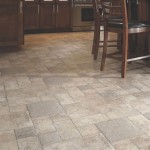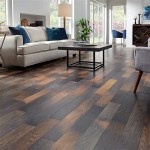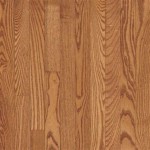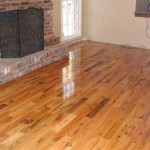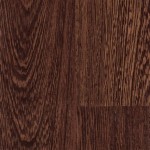Thickness of Hardwood Flooring: A Comprehensive Guide
Hardwood flooring, a classic and timeless choice for homes, comes in a variety of thicknesses. Understanding the varying options is crucial to ensure a floor that meets your specific needs and expectations. The thickness of hardwood flooring significantly impacts its durability, stability, and overall performance.
### Standard ThicknessesHardwood flooring generally falls into three standard thickness categories:
-Solid Hardwood:
Typically 3/4 inch thick, solid hardwood planks run the entire length and width of the board. -Engineered Hardwood:
Usually 5/16 to 9/16 inch thick, engineered hardwood consists of several layers, with the top layer being real hardwood. -Laminate Flooring:
Not considered genuine hardwood, laminate flooring averages 7/32 to 12 millimeters (0.281 to 0.472 inches) thick and features a photograph of hardwood species on the surface. ### Benefits and Considerations of Different ThicknessesSolid Hardwood
-Pros:
Exceptional durability, stability, and longevity; can be refinished multiple times to extend its lifespan. -Cons:
May require a thicker subfloor for installation, which can add to the cost.Engineered Hardwood
-Pros:
More stable than solid hardwood, making it suitable for areas with moisture concerns; easier to install than solid hardwood. -Cons:
May not be able to be refinished as often as solid hardwood.Laminate Flooring
-Pros:
Highly affordable, easy to install, and resistant to water damage; comes in a wide variety of styles. -Cons:
Cannot be refinished, has a shorter lifespan than hardwood, and may not be as durable. ### Choosing the Right Thickness The ideal thickness for your hardwood flooring depends on several factors: -Subfloor Condition:
A thicker subfloor can accommodate thicker hardwood flooring without compromising its stability. -Foot Traffic:
Areas with heavy foot traffic, such as hallways or living rooms, benefit from thicker hardwood flooring. -Moisture Exposure:
Engineered hardwood is recommended for areas prone to moisture, such as kitchens and bathrooms. -Personal Preference:
Consider your aesthetic preferences and the overall design of your home. ### Measuring Hardwood Flooring Thickness When measuring the thickness of hardwood flooring, follow these steps: 1.Locate the Tongue or Groove:
Most hardwood planks have a tongue or groove system on the edges. 2.Measure the Thickness:
Place a ruler or caliper between the tongue and groove at the edge of the plank. 3.Average the Measurements:
Take several measurements along the plank and average them to get an accurate thickness value. ### Conclusion Understanding the thickness of hardwood flooring is essential for making an informed decision that complements your home's needs and preferences. By considering the benefits and drawbacks of each thickness category and choosing the appropriate option, you can ensure a durable, beautiful, and long-lasting hardwood floor that enhances the ambiance of your living space.
Solid Wood Flooring Vs Engineered

5 Proven Hardwood Flooring Thickness Categories Easiklip Floors

Wear Layers On Engineered Flooring

Solid Wood Flooring Thickness Guide And Beyond Blog

Types Of Floors Wood Installation Refinishing Staircases Doors And Custom Designs

3 Layer T G Engineered Flooring Thickness 19 05 Mm Coswick Com

20 6mm Thickness 190mm Wide Eu Oak Engineered Wood Flooring With Deep Embossed China Hardwood Small Taun Made In Com

What Size Does Wood Flooring Come In And Beyond Blog

How Thick Is Hardwood Flooring A Thickness Guide Reallyfloors America S Est

Have A Question About Aspen Flooring Sunlight White Oak 1 2 In T X 7 5 W Engineered Hardwood 932 Sqft Pallet Pg The Home Depot
Related Posts

